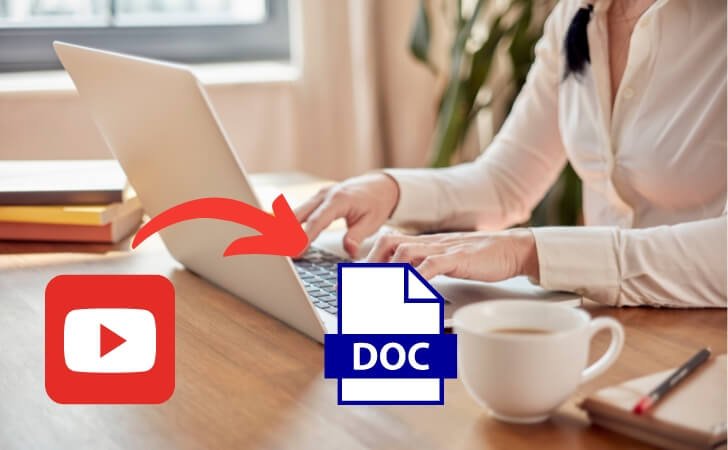AFFILIATE DISCLOSURE
This post may contain affiliate links. An affiliate means Escribr may earn referral fees if you make a purchase through our link without any extra cost to you. It helps to keep this blog afloat. Thanks for your support!
Did you know that by visiting this blog, you are doing good in the world? READ THIS.
Did you know researchers spend 6-8 hours on just one hour of audio?
This shows how time-consuming transcription is.
Outsourcing this work has changed the game for many, saving them time and resources.
Turning spoken words into text is key for analyzing data.
It lets researchers explore the details of what people say.
By using professional services, they can concentrate on analyzing and understanding the data.
Outsourcing transcription saves time and ensures it’s done right.
Professional transcribers catch every detail, including what’s not said.
This precision boosts the quality of research.
Understanding the Importance of Research Interview Transcription
Research interview transcription is key in qualitative studies. It turns interview recordings into detailed transcripts.
This lets researchers dig deep into their data, finding important insights and patterns.
Accurate transcripts are the base for deep analysis.
They let researchers go back to conversations, spot key themes, and pull out significant quotes.
This step is essential for fully grasping what participants said and felt.
By changing audio to text, researchers can:
- Easily search and navigate through large amounts of data
- Share findings with colleagues and collaborators
- Create a permanent record for future reference
- Ensure transparency and reliability in their research
Interview recordings catch details that might be overlooked in the first talk.
Transcripts let researchers go back to these moments, noticing subtle cues and deeper meanings.
This detail is crucial for top-notch research results.
In short, investing in precise transcription is vital for thorough analysis and significant findings in qualitative research projects.
Choosing the Right Transcription Style
In research interviews, the manner of speech can be as revealing as the content itself.
For this reason, Verbatim Transcription is typically the preferred style.
This approach captures every nuance of the recorded interview, including:
- Filler words (e.g., “um,” “uh,” “you know”)
- False starts and self-corrections (e.g., “I think that would be — I’d say that’s something important”)
- Word or phrase repetitions (e.g., “in that case, in that case, the methodology would differ”)
- Nonverbal cues (such as laughter, significant pauses, coughing)
- Contextual details (e.g., side conversations, interruptions, people entering or leaving)
Verbatim transcription preserves the authenticity of the interview, allowing researchers to analyze not just what was said but how it was expressed.
In contrast, Intelligent Verbatim transcription involves some editing of the original speech.
While this style can produce a more polished text, it’s generally not recommended for research purposes as it may omit subtle but potentially significant elements of the interview.
Establishing Clear Formatting Guidelines
Proper formatting is crucial for creating usable transcripts.
Without structure, a transcript can become an indecipherable block of text, rendering it nearly useless for analysis.
To ensure your transcripts are clear and valuable, provide your transcriptionist with these essential formatting guidelines:
1. Speaker Identification
- Use initials, first names, or full names to indicate speaker changes.
- Consider using bold text for speaker labels to improve readability.
- Differentiate between interviewer and interviewee(s) by using italics for one party.
2. Time Stamping
- Mark unclear or inaudible sections with time stamps [hh:mm] or [hh:mm:ss].
- Highlight these sections for easy identification during review.
- This allows for quick reference to the original audio for clarification or correction.
3. Time Coding
- Implement regular time codes (e.g., every 20 seconds or 1 minute).
- Ensure the formatting is compatible with your chosen software.
4. Custom Formatting
- Consider additional formatting options to capture nuances:
- Use ‘…’ for short pauses
- Indicate [duration] for long pauses
Remember to document these guidelines clearly and share them with your transcriptionist before starting the project.
This ensures consistency and saves time in the long run by reducing the need for extensive revisions.
Ensuring Quality and Managing Your Outsourced Transcription
1. Verify Accuracy
- Aim for a minimum accuracy rate of 98.5% in research transcription.
- Request a test transcription of one interview to assess quality.
- Be prepared to pay for sample work from multiple providers.
- Consider this initial investment as a long-term saving on proofreading costs.
2. Compare Pricing
- Research transcription rates typically range from $60 to $90 per audio hour.
- Factors affecting cost include the service provider’s location and expertise.
- Student discounts may be available with proper documentation.
- Obtain quotes from multiple providers to ensure competitive pricing.
3. Establish Confidentiality
- Request a signed Non-Disclosure Agreement (NDA) from your chosen provider.
- Ensure the NDA covers both interview recordings and transcripts.
- Specify requirements for data deletion upon project completion.
- Document all confidentiality requirements before commencing work.
4. Implement Regular Reviews
- For new or unfamiliar transcription services, conduct periodic transcript reviews.
- Don’t wait until all interviews are transcribed to check quality.
- Regular reviews allow for timely feedback and necessary adjustments.
Remember, while research transcription requires more effort than other types, investing in quality services up front can save time and resources in the long run.
By following these guidelines, you can ensure accurate, confidential, and cost-effective transcription of your valuable research interviews.



 Otter.ai Alternatives Worth Trying" />
Otter.ai Alternatives Worth Trying" />






